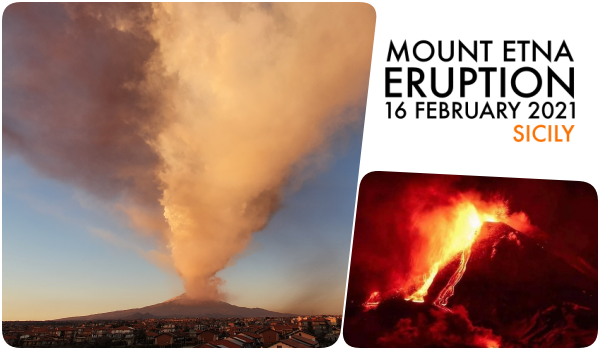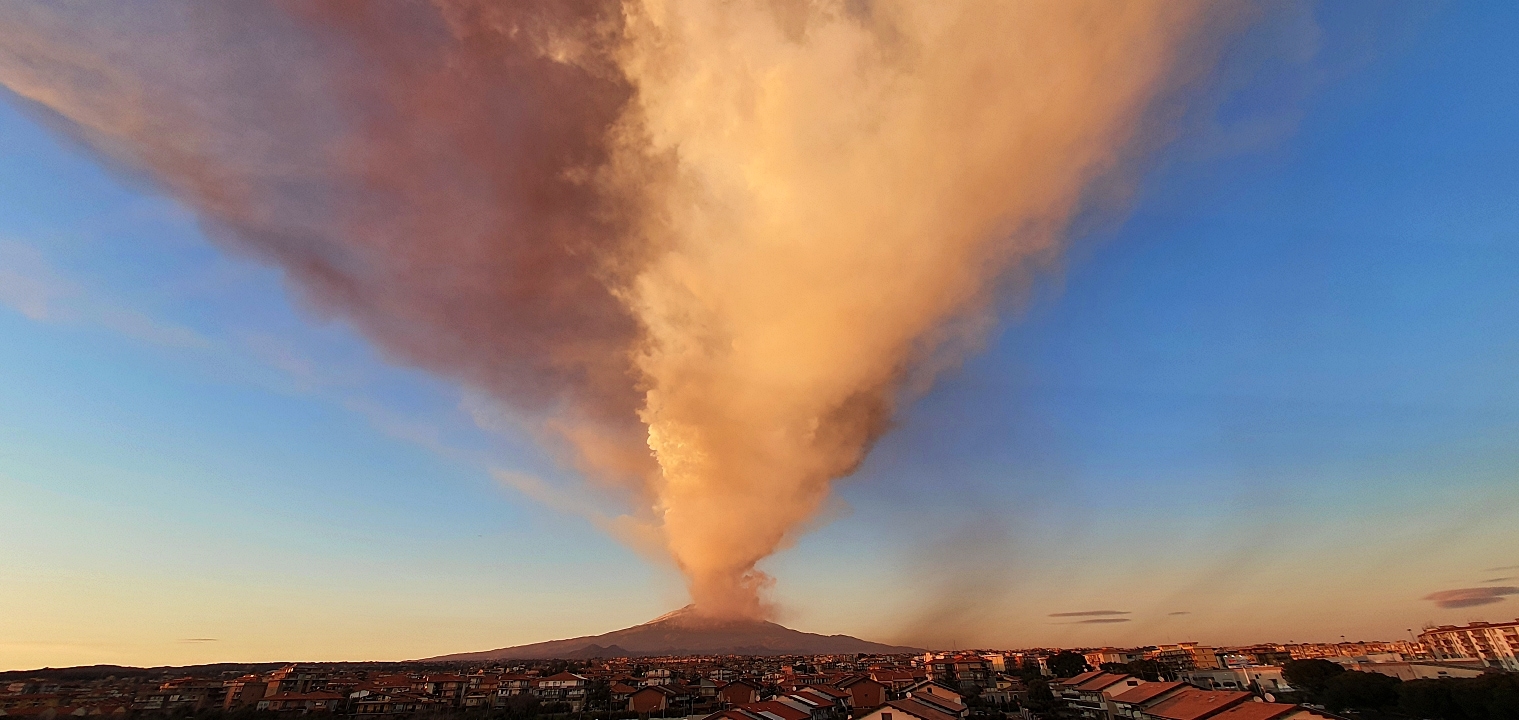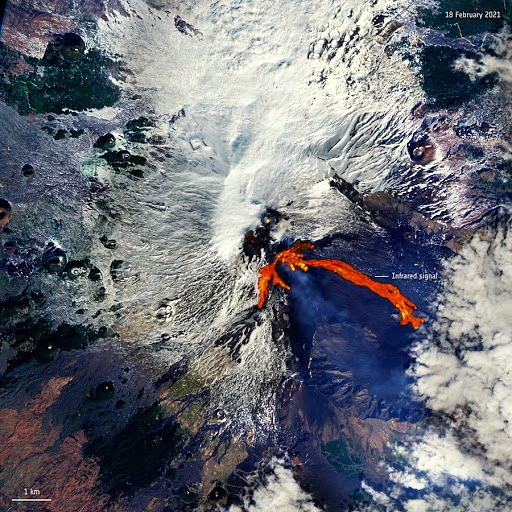
Mount Etna eruptions February 2021
Summary of all Mount Etna eruptions that took place on February 2021. Eruptions distinguished by violent explosions of Strombolian type. Strombolian eruptions involve moderate bursts of expanding gases that eject clots of incandescent lava in cyclical or nearly continuous small eruptions. After that, one of these explosion caused the subsidence of a small portion of the south-east crater. The rockfall raised a large cloud of gas and pyroclastic material that rapidly reached Catania and the nearby towns.
SPECTACULAR ERUPTION OF MOUNT ETNA WITH ASH AND LAPILLI FALLOUT OVER CATANIA
The Strombolian activity projected a high dark cloud over Catania and the nearby villages. A large fall of ash, but also lapilli of about one centimeter in size. Catania international airport closed. The airport’s security unit suspended all operations due to the emergency linked to the volcanic ash cloud.

LAPILLUS, plural Lapilli, unconsolidated volcanic fragment with a diameter between 4 and 32 mm (0.16 and 1.26 inches) that was ejected during a volcanic explosion. Lapilli may consist of fresh magma, solid magma from a prior eruption, or basement rocks through which the eruption passed.
ETNA AWAKENS: THE IMAGES OF THE SPECTACULAR ERUPTION
According to INGV (National Institute of Geophysics and Volcanology), just over an hour later, the lava fountains, which caused the falling of ash and lapilli over a wide portion of the province around Mt Etna, were exhausted. The two lava flows poured into the “Valle del Bove“, the wide caldera covering the eastern flank of the volcano. Later they divided and slowed down to finally finishing their slow run at around 1.600 meters above sea level.
A NEW ERUPTION OF ETNA LIGHTS UP THE NIGHT!
In the early hours of February 18th 2021, nearly thirty hours after the paroxysm of February 16th, the Southeast Crater of Mount Etna took of again with a new eruption.
Previously, in the late evening of February 17th, the explosive activity gradually intensified, together with an increase of the amplitude of “volcanic tremor”. Around 11:30 pm, a lava flow developed from the eastern vent of the S.East crater, heading towards the caldera “Valle del Bove”.

THE LAVA FLOW OF FEBRUARY 18TH, 2021 SEEN FROM SPACE
The spectacular images taken by satellites that show the different branches of the lava flows produced by the volcano Etna.
Shortly, after 01:00 am on February 18th, the explosive activity showed a sudden intensification. The lava fountains reached 600-700 m on heights above the summit of Etna. An eruptive plume of gas, volcanic ash and lapilli rose up to an altitude of a few kilometers above the volcano. This poured down ash and lapilli over Zafferana Etnea and Acireale.
The lava fountain activity lasted for about forty minutes and ended quickly, coinciding with the decrease in the amplitude of the volcanic tremor, and the disappearance of infrasonic signals. Several lava flows developed from the crater, spreading east, north-east and south-west. The largest lava flow reached a length of about 3.5-4 kilometers. The flow stopped a few hours later at an altitude just below 2000 m.
In the hours following this paroxysmal episode, sporadic explosions were still observed from both the Southeast Crater and the Voragine Crater. During the morning of the 18th, the amplitude of the volcanic tremor began to show a slight increase again.
THIRD ERUPTION OF MT ETNA IN THREE DAYS
On the morning of February 19th, 2021, the Southeast Crater of Etna produced a third eruption within a few days. Shortly before 09:00 pm, a small lava flow began to emerge from the eastern vent of the S.E. Crater, through a “niche” along the crater rim formed during the paroxysm of February 18th.
Through satellite observations it has been estimated that the eruptive column reached a height of over 10 km above sea level.
At the same time, frequency and intensity, increased the Strombolian explosions. Throbbing lava jets spewed out from several points along the fracture. In the following minutes, other vents further west were gradually activated. An eruptive column charged with pyroclastic material was formed, which rapidly rose for several kilometers above the summit of Etna.
Spectacular explosive interactions have been observed between lava flows and snow; which on several occasions have produced phenomena extremely similar to pyroclastic flows. But they have been generated by mechanisms called hydromagmatics or phreatomagmatics, in points far from the eruptive vents.